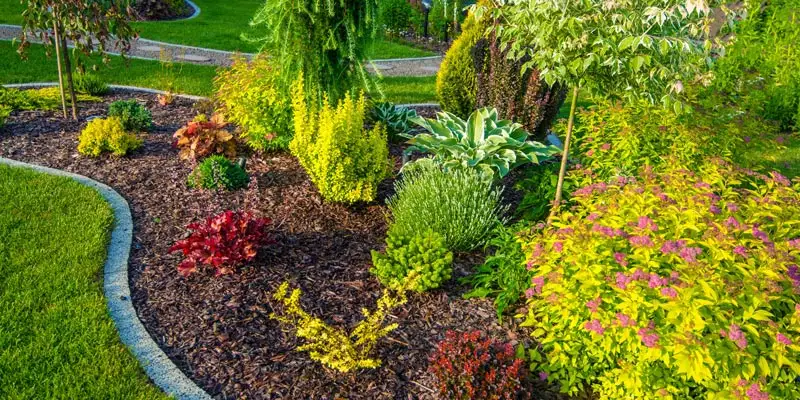Landscape Design Can Be Fun For Anyone
The Basic Principles Of Landscape Design
Table of ContentsSome Known Details About Landscape Design Not known Factual Statements About Landscape Design The Definitive Guide to Landscape DesignLittle Known Questions About Landscape Design.
Formal design theme. Credit Rating: Gail Hansen, UF/IFAS The backyard is an extension of the home where a selection of tasks happen. A lawn can generally be separated into 3 areas: public (the front backyard), personal (the back yard), and solution (generally the side yard). The area of task locations depends mostly on the kind of area, the dimension of space needed, the kind of activity, and the wanted closeness to other tasks and frameworks (Landscape Design).
The outside wall surface of your home typically works as the very first wall or beginning point of an exterior space. Incompatible usages should be divided, and relevant activities, such as food preparation and dining, need to be created to make the yard extra effective and satisfying. When using hardscape to produce rooms, use construction material similar to that used in your house for connection from your home into the garden.
Connected spaces. Debt: Gail Hansen, UF/IFAS Making use of comparable hardscape functions and duplicating plants draws the eye around the garden. Vital points in the process can be emphasized with growings or attributes that draw focus and urge movement in a specific instructions. Moving along the course takes an individual from one location to the following and allows the user to have a range of experiences.
From a layout point of view, plant products have three major functions in the landscape: aesthetic, structural and utilitarian. Aesthetically, plants create a visually pleasurable atmosphere and structurally plants arrange and define spaces.
The Only Guide to Landscape Design
For psychological comfort plants are made use of as physical or implied obstacles for privacy and security. Physical barriers obstruct both the sight and accessibility to a space and consist of fences, wall surfaces and plant bushes. Landscape Design. Implied obstacles, generally low growing plants, obstruct access yet not the view (Number 9). Various other functions of plants include cleaning up the air, preventing disintegration and soil loss, retaining moisture in the soil, and returning natural matter to the soil.
Physical and indicated barriers. Credit Scores: Gail Hansen, UF/IFAS For these reasons, the types of plants to be made use of (such as trees, hedges, or groundcovers) must be chosen in the onset of preparation. Plant types are selected for their practical capabilities to make sure that their future purpose and needed room can be considered at the same time.
The above aircraft, the upright airplane and the ground aircraft must all be taken into consideration to develop room. As soon as the form of a plant bed has been established, the plants need to be massed (organized) and layered to achieve visual unity and the preferred quantity of unit. The size of a plant mass will certainly rely on the total dimension of the yard, the size of the private plants in the mass, and the emphasis or effect preferred from the plant product.
Each plant mass is in front of, behind, or beside, another mass. Number 11. Horizontal plant layers. Debt: Gail Hansen, UF/IFAS Number 12. Upright plant layers. Credit: Gail Hansen, UF/IFAS Repeating plants within a mass and duplicating masses with comparable plants links the garden together. The specific plant characteristics must be taken into consideration to effectively layer and mass plants.
Fascination About Landscape Design
All plant compositions start with the major structure plants, the large, primarily evergreen history plants-such as the trees and large hedges. These plants different or enframe spaces, control the dimension of the room, and offer find more information the starting factor for selecting the appropriate characteristics of the second layer, midground plants, for massing and infill.
Vital points in the garden must be highlighted by the use distinct plants, distinctive structures, or yard accessories. Noting limits or entryways to spaces can be finished with gateways, arbors, and steps, or with using special and vibrant plants. The type and/or design theme of the yard will certainly frequently assist establish the vital factors and just how they ought to be highlighted.
Other essential places in the backyard are focal factors, which is used to aesthetically organize a landscaped area. Different perspectives or perspectives can disclose various compositions in the landscape that might require a range of focal points.
The Best Strategy To Use For Landscape Design
Figure 13. Plant kinds. Credit Report: Gail Hansen, UF/IFAS After form, structure is the next leading feature of a plant; coarse, medium and fine appearances can be utilized for comparison and emphasis in the browse around this site landscape. Type and texture both trump shade in the yard for many of the year. Nonetheless, throughout particular periods, shade will certainly view it now be the most visible quality of the garden.


The pleasurable scent of plants, the audio of wind in the trees, the audio and appearance of water, and the shades and appearances of sculptures, pots and yard furniture all contribute to the experience of the yard. One information that is typically overlooked is the result of light on the looks of the plants.
The entire yard adjustments in function and appearance over the course of the day, and the course of a year, as the light and temperature level adjustment from morning to evening and period to season. Plant choice have to consider a plant's growth price, its mature size and kind, and the upkeep it will need.
It is very important to understand the ultimate mature dimension of plants so they can be positioned in the right place and spaced properly when they are installed. Offering plants room to grow is a difficulty because the common mature dimension is normally based on optimal growing conditions and the ecological problems of a site might create a plant to expand larger or stay smaller sized.